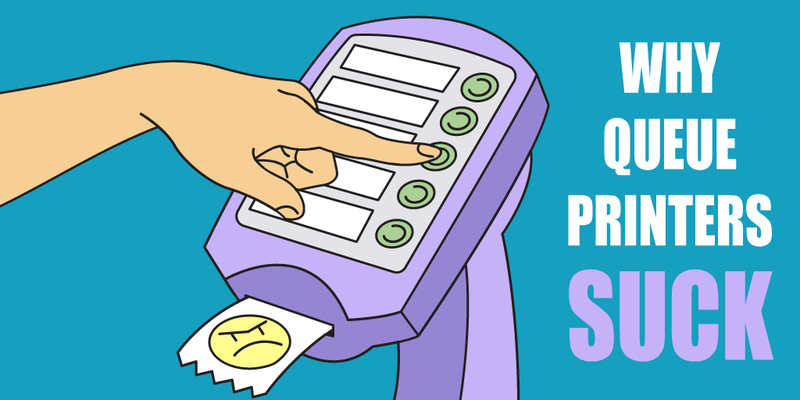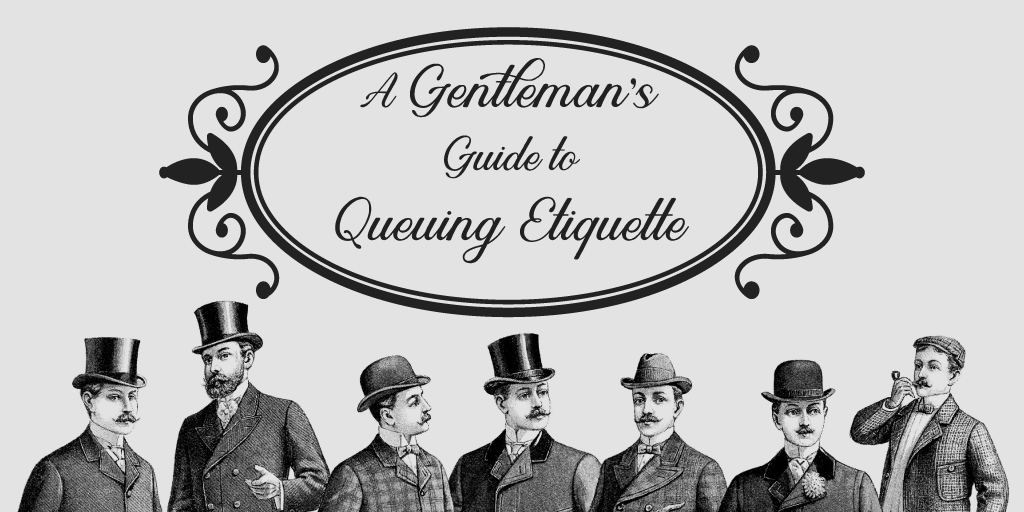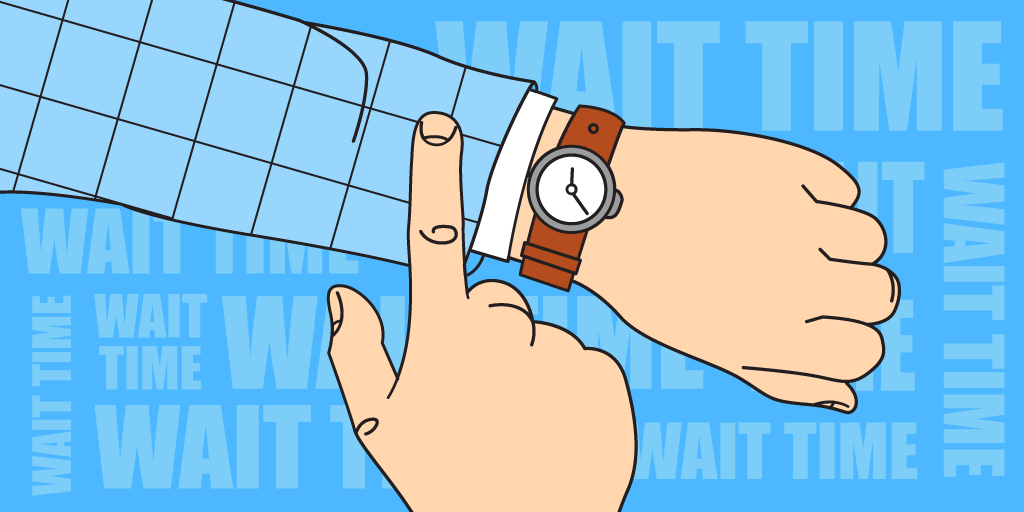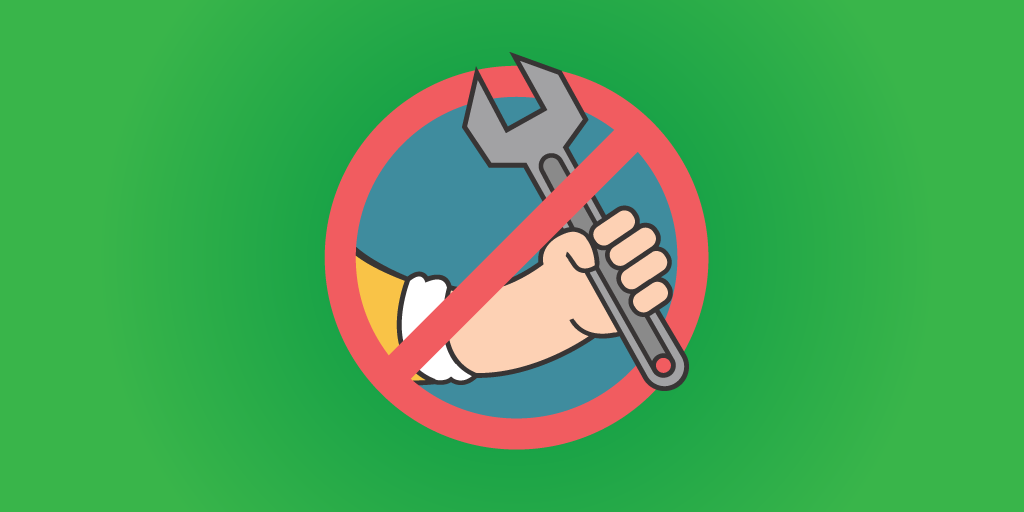- Take-a-number machines: friend or foe? (Spoiler: it’s definitely a foe.)
- Digital technologies make it easier to reach your customer on a more personal level, even when it comes to queue management.
- Top companies have started to abandon the outdated queuing systems in favor of new, innovative means of managing visitors.
Innovation is not for sentimental people. As technology develops, we’re bound to take some tried-and-true tools behind the proverbial shed and say our goodbyes, Old Yeller-style.

Sorry for making you relive these painful memories.
One such tool is a take-a-number queuing machine — except forget the tried-and-true part, it doesn’t apply here. This device has long since outlived its usefulness, no matter how many companies still persist in using it.
It’s like seeing an old man doing his damnedest at the Youth Festival dance floor — points for trying, but you’re still not welcome here.
Why are take-a-number machines such a pain in the neck? What are the alternatives to using a take-a-number system? All of this, and more, will be covered in today’s article.
Let’s dive in!
Defining the term
If you’ve started reading this article with the thought, “What the hell is a take-a-number machine?”, perhaps you know this technology by a different name.
(If not, feel free to skip this boring part onto the next section.)
For the record, it’s this beast:
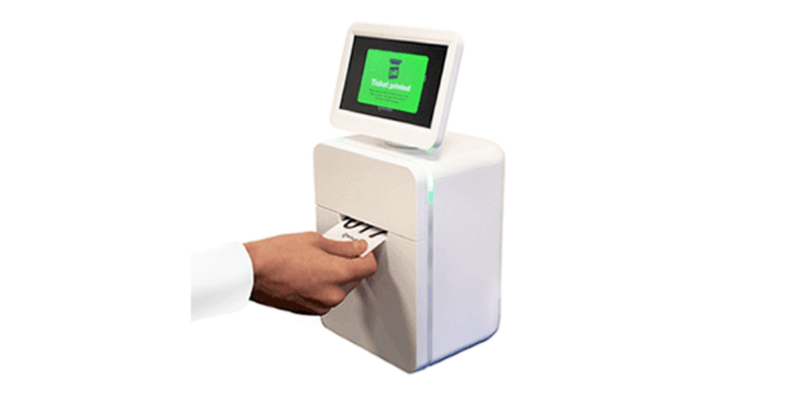
As seen in our documentary, Qminder: The Blunder Years
(Hey, we all got skeletons in our closet, ok?)
You can almost imagine David Attenborough mumbling in the background: “Don’t let their bulky, uninspiring look deceive you. They are absolute killers at what they do — wasting your precious time.”
As they say, the devil goes by many names. (Alright, they don’t say that, but they probably should start doing it.)
You may know this device as a queue ticket printer, a ticket dispenser, a queue printer, or maybe even a queue kiosk number machine.
Don’t worry, you don’t need to remember all of these terms. As we’re about to show you, queue printers suck (hence the title of this article) and you should forget about their existence entirely.
In the interest of being fair, though, we will forego our usual bias and start with pros of using a queue ticket dispenser.
The advantages of a queue ticket machine
There are none.
Now, let’s move on to the juicy bits.
The cons of a take-a-number queuing system
Strap in, folks, we’re going deep.
We’ve got a huge topic to cover, but we won’t be going in alone. We are going to be assisted by Lancaster Archery, a long-time partner of Qminder and a former user of a ticketing system.
Lancaster Archery is one of the more prominent providers of archery equipment, so you know whatever they’re going to say will hit the bullseye.
Without further ado, 3 main cons of using a take-a-number queuing system.
Up close and impersonal

First, let’s hear it from Lancaster Archery:
“We wanted to get away from the number system, because there was no introduction for the client. Without knowing the customer’s name, we couldn’t offer a good client interaction.”
The inability to know a customer’s name doesn’t seem like such a big deal — until you realize how useful knowing a person’s name is.
An important note: Names are unique identifiers. Dale Carnegie once said, “A person’s name is to that person, the sweetest, most important sound in any language". He wasn’t just waxing poetic, either — studies show that hearing our names elicit specific, positive responses in our brains.
As we all know from real-life interactions, the moment the person you’re talking to starts using your name is a game-changer. It feels like a barrier’s gone, and now you’re closer to that person.
Take-a-number machines don’t allow using names, though. They go about queuing the simplest, cheapest way possible — by printing out numbers instead of names.
Now, numbers can also be thought of as unique identifiers. But they surely don’t help build the trust or elicit positive feelings the way calling out names does. That’s why, as Lancaster Archery has learned, it is better to use name-based queuing technology.
One of the least noticeable but still relevant advantage of such a queue system is that since customers themselves fill this info, they can choose how they want to be called by customer service staff.
So all Matthews who prefer to be called Matt and Roberts who prefer Rob can stop worrying: technology has got their back.
No way to keep track

When describing their experience with queue printers, Lancaster Archery has shared this gem as well:
“Before, the customer would just pull a number, let’s say 67, and we had no idea how many more numbers there are waiting.”
The lack of feedback regarding waiting time is as annoying to customers as it is to staff. The thing is, without this data, there can be no effective workload planning.
Is the number of reception desk enough to handle all the visitors? Where should the additional staffers be allocated to? Who’s biting off more than they can chew and needs help?
These are all important questions, none of which can be answered if you’re still using a take-a-number machine. It is, as the name implies, just a printing device that is unable to give you a quick rundown of the on-floor situation.
Again, take it from Lancaster Archery:
“Qminder allows us to plan our workflow better. We can categorize the customers; we know how many customers there are in the line for a specific service, who’s there for pickup or who needs a new string for their bow or looking for a new bow. The clerks working in the back can come up front when additional help is needed.”
When employees know exactly what they’re doing and what is waiting for them, their life becomes that much easier. The good ol’ formula of “satisfied visitors = satisfied employees” works the other way, too:
Satisfied employees = satisfied customers.
No freedom of movement

Customers don’t like to be restricted, and that’s exactly what happens when queue ticket printers are involved. They make queuing a stand-and-wait-for-your-turn affair.
What’s the alternative? It’s easy, actually: you let customers sign in and then monitor their queuing progress on the screen in real time.
Just like how Lancaster Archery is doing it:
“The customers see their name on the TV and that allows them to watch the progress of the service. If there’s 5 persons ahead on them, they can go walk around the shop until their name is called.”
With Qminder, you can even take advantage of text message notifications. These are sent to visitors once they sign in or when they are being called. This minimizes the usual confusion of waiting rooms.
Instead of standing around, not doing anything except wondering how many “numbers” there are before them, your visitors can relax, walk around at their own leisure, and do whatever they fancy.
Well, since you’ve read it this far, how about you join our endless crusade against time-wasting queuing machines?
Get on with the times, for technology is not standing still, and embrace the future of customer service — digital queuing solutions. If you don’t want to take it from us, take it from our many successful customers.

